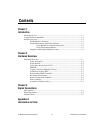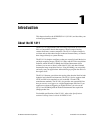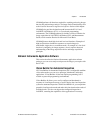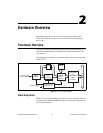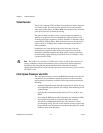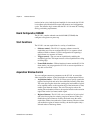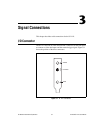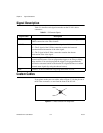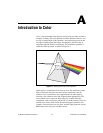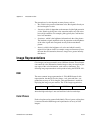
Chapter 2 Hardware Overview
NI PXI/PCI-1411 User Manual 2-2 ni.com
Video Decoder
The NI 1411 supports NTSC and PAL video standards in either composite
or S-Video format. The onboard video decoder converts the incoming
video signal to Red, Green, and Blue (RGB) data and passes this data to the
color-space processor for further processing.
The video decoder also allows you to control numerous parameters to
optimize an acquisition. You can independently adjust parameters such
as analog input range, brightness, contrast, saturation, or frequency range
(controlled by different filters). Refer to the Measurement & Automation
Explorer Help for NI-IMAQ for a complete description of the NI 1411
video parameters.
Furthermore, the video decoder strips out all necessary clock and
synchronization signals included in the video signal and controls the
acquisition conditions automatically. High-quality circuitry regenerates
even bad timing signals allowing acquisitions from, for example, a video
cassette recorder (VCR).
Note The NI PCI-1411 revision C, NI PXI-1411 revision A, and all later revisions are
factory calibrated to improve measurement accuracy and board-to-board consistency.
Specifically, the luma gain and chroma gain have been calibrated. For detailed
specifications of the NI 1411, refer to the Specifications section of Getting Started with the
NI PXI/PCI-1411.
Color-Space Processor and LUTs
The color-space processor receives the RGB data from the video decoder
and performs several different (optional) operations on the data before
passing them to the memory controller. Processing functions include the
following:
• Adjusting independent gain of the three signals (R, G, and B). You can
use independent gain to perform, for example, white balancing on the
acquired image.
• Applying three independent lookup tables (LUTs) to the R, G, and
B data.
• Converting the RGB data into Hue, Saturation, and Luminance (HSL).
• Processing the hue plane to clear pixels where the saturation
falls below a predefined threshold value. This function is called
post-decoding coring. You can use this function to remove part of the
image without color information (monochrome) that otherwise would
introduce noise on the hue plane.




